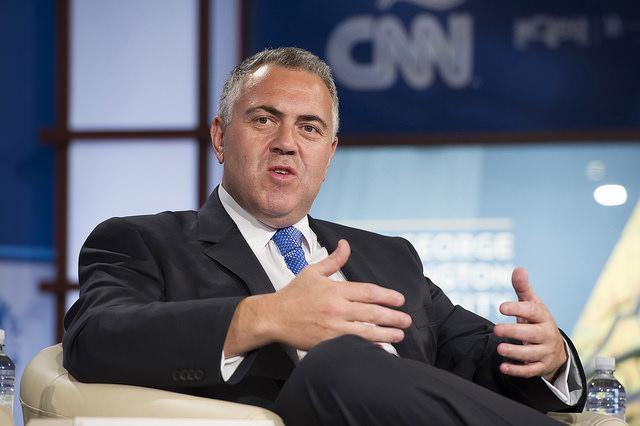The Government has announced an overall increase of $1.2bn over the next four years in national security spending. This new money comes in addition to the $1bn counter-terrorism and Iraq operations funding announced last year—and there’s also additional funding for border protection and health and social cohesion.
In a time of budget stringency, this is a good outcome because additional money for national security is needed. But as an analysis of this figure shows, this new funding is narrowly targeted with many national security agencies facing further cuts.
Interesting, Defence gets most of this new money, with $750m of the headline $1.2bn being assigned to overseas operations in 2015–16. This comes in addition to an extra $2.4bn in the Defence department’s budget.
The remaining $450m of new money has been allocated to three major areas.
The first, totaling $296m over six years, involves the Australian Secret Intelligence Service. This agency, which is responsible for overseas intelligence collection, will receive additional staff, information technology and facilities. ASIS’ annual budget in 2015–16 will increase by $30m to a total of $405m.
A total of $131m is being given to telecommunications businesses to help them implement the mandatory data retention scheme. Government agencies will also receive around $20m to help them adjust, half of which goes to the oversight agencies, the Privacy Commissioner and Commonwealth Ombudsman.
The balance of the national security package—around $22m over four years—is assigned to countering violent extremism online. This will include monitoring and a reporting tool that encourages community participation in the effort.
In addition to the headline amount, border security will receive additional funding for smart gates, new information technology, and training of the newly-created Australian Border Force.
Money that will assist national security is also allocated in the Health portfolio to the Darwin-based National Critical Care and Trauma Response Centre ($63.5m over four years) and $20m over two years for drug education.
And only yesterday, Senator Brandis has said that the government will spend $545 million over four years to support social cohesion and community based programs, which he says will complement spending on national security agencies. This money is included in the human services budget.
But the story for national security agency bottom lines is not altogether rosy, with many taking cuts:
- Australian Federal Police takes a $53m reduction—a four percent budget cut—based on reduced funding for overseas operations, and anticipated savings in domestic programs. The AFP’s counter-terrorism budget will receive a $7m boost. Around 115 positions will go as a result of savings measures amounting to a two percent cut in staff.
- Australian Crime Commission takes a $6.5m budget reduction and loses another 17 staff positions.
- The CRIMTRAC Agency is funded by its services, so its allocation is usually unaffected by the Commonwealth budget. Its $110m investment pool is likely to be drawn upon this year to refresh its IT systems.
- Australian Transactions Reporting and Analysis Centre (AUSTRAC), which is both a regulator and financial intelligence unit, is budgeted for a slight expansion of $1m and another 20 positions. User chargers will be increased to cover 90% of its operating costs.
- Australian Security Intelligence Organisation (ASIO) receives an additional $12m or 1% budget increase from the 2014–15 counter-terrorism measures, with personnel climbing by 75 positions to a new ceiling of 1,768 staff.
Readers may recall Recommendation 52 of the National Commission of Audit to increase the size, scope and resources for the ACC through a merger with CRIMTRAC, and possibly combining AUSTRAC as well. There has also been speculation that the Australian Institute of Criminology might be merged into the ACC. None of these mergers have happened and it remains unclear whether the government will act on the Audit Commission’s recommendations.
One organisational change announced earlier is the Serious Financial Crime Task Force. This task force will replace Project Wickenby, which focused on major cases of tax evasion, avoidance and crime, and it will be funded at $127.6m over four years. This task force, led by the Australian Taxation Office, follows a trend of creating multi-agency, specialist units within established agencies.
This Budget will be viewed as a ‘win’ for national security and it contains positive measures. It also comes on top of a large additional spending package announced last year in the wake of the May 2014 federal budget.
Most noticeably, it maintains the Government’s focus on combatting terrorism. But it’s time to ask whether other criminal activities warrant more attention. I’m specifically thinking of the fight against organised crime. Key institutions in this fight have taken budget cuts, even as related areas receive investment – such as the spending on metadata retention and the serious financial crime task force. Questions remain about the structure and role of federal law enforcement agencies adding to the case for a Commonwealth white paper on law enforcement.
